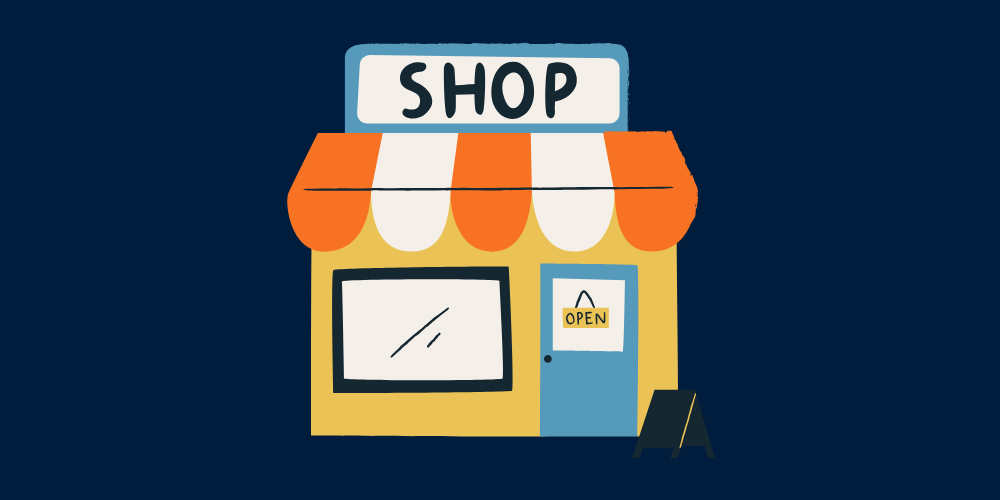Shopping has changed. We’re no longer just browsing shelves or scrolling product pages – we’re discovering products in Instagram Stories, buying straight from TikTok Shop, and tapping on ads in the middle of a YouTube video. Wherever people are consuming content, they’re shopping too.
This is where social commerce and shoppable media come in. They sound similar and turn content into conversions, but they’re not the same thing. Understanding the difference is essential for brands that want to build seamless, high-converting customer journeys across platforms.
So, what separates social commerce from shoppable media? And how can you use each one to your advantage? In this blog post, we explain everything you need to know.
What is social commerce?
Social commerce involves selling products directly within social media platforms, such as TikTok and Instagram, turning likes and comments into conversions without the need to leave the app! With social commerce, the entire shopping journey – from discovery to decision – takes place on one platform.
Core features of social commerce include:
- In-app checkout – removing the need to visit an external site
- Shoppable posts and videos – featuring directly clickable content
- Influencer integrations – where recommendations drive sales
- Personalised shopping feeds – curated based on user behaviour
Social platforms have been slowly evolving from community spaces to e-commerce hubs – however, you can expect this growth to accelerate in the next few years. Experts predict the social commerce GMV in the UK to reach $83 billion by 2029. For brands, it’s a no-brainer – if your audience is on social media, your store should be too.
What is shoppable media?
Shoppable media is a broader term that covers any form of media content that allows users to click through and purchase a featured product. This could be any media content – not just social.
Shoppable media includes:
- Interactive videos with embedded product links
- Display ads with click-to-buy overlays
- Live streams where viewers can shop in real-time
- QR codes on TV ads or out-of-home posters
Essentially, shoppable media refers to any content that invites viewers to shop without breaking the flow of their experience. Unlike social commerce, which is native to social media platforms, shoppable media is a more omnichannel technique.
What are the advantages of social commerce?
Social commerce offers convenience for modern shoppers – whether they shop casually, socially, or impulsively. Some of the advantages of social commerce include:
- Smooth conversions – Social commerce keeps users inside the app, meaning there’s a lower bounce rate between interest and action. No loading external pages, no abandoned carts due to clumsy redirects – just a smooth scroll-to-sale journey.
- Built-in audience targeting – Social platforms already know a lot about their users, which means your products can be shown to people who are algorithmically more likely to convert based on interests, behaviours, and past purchases.
- Real-time trends – Social commerce lets you ride the wave of viral trends instantly. If a product starts gaining traction, you can boost it, tag it, and sell it in real time, without needing to build a campaign from scratch.
What are the benefits of shoppable media?
Marketers often favour shopping media for its versatility, depth, and cross-channel reach. Some of the benefits of shoppable media include:
- Omnichannel flexibility – Shoppable media can live anywhere, from editorial content to email campaigns and more. You’re not tied to a single platform, which allows for more control over brand experience and touchpoints.
- Deeper engagement – Interactive elements like hover-to-buy, click-to-shop or in-video pop-ups give users a reason to engage beyond just watching or scrolling. The result? Higher time-on-page, increased product exploration, and stronger intent.
- Performance visibility – As shoppable media often links back to your own site or product feed, you get more in-depth analytics. You can see exactly what people clicked, when they dropped off, and how content is driving ROI, ultimately making optimisation easier.
Social commerce vs shoppable media: What’s the difference?
While social commerce and shoppable media both aim to bridge the gap between inspiration and purchase, they vary in format, flow and function. Social commerce works best for fast-moving consumer goods, trend-led purchases, and audiences who are already keen to buy on impulse. Alternatively, shoppable media offers more storytelling opportunities and a richer brand experience.
While social commerce is platform-native and often used for low-friction purchases, shoppable media is omnichannel and ideal for higher-consideration journeys where brands want more control over their narrative and brand design.
Social commerce vs shoppable media: Which works better for my business?
Choosing between social commerce and shoppable media comes down to your product, audience and journey you’re designing. If you’re targeting Gen Z or millennials with trend-driven, lower-cost items, such as beauty, fashion or home accessories, social commerce is ideal. It’s built for immediacy and thrives on the kind of impulse buying that happens during a late-night scroll.
However, if your product needs more explanation, comparison or trust-building, such as tech, luxury, or wellness products, shoppable media gives you the space to tell that story. It’s ideal when you want to showcase features, add social proof or guide users through a longer decision-making process.
Ultimately, we always advise using both techniques in an integrated marketing strategy. Social commerce might spark interest, while shoppable media can nurture it, or vice versa! It’s not a case of which works better, but how you layer each technique to meet customers wherever they are in their journey.
Build a high-converting commerce strategy with Blank Slate Digital
At Blank Slate Digital, we help brands create seamless journeys that turn scrolls into sales. From creative concepts to conversion tracking, we have the tools and insight to help your campaigns cut through the noise. Get in touch today, and we’ll be happy to answer any questions.


